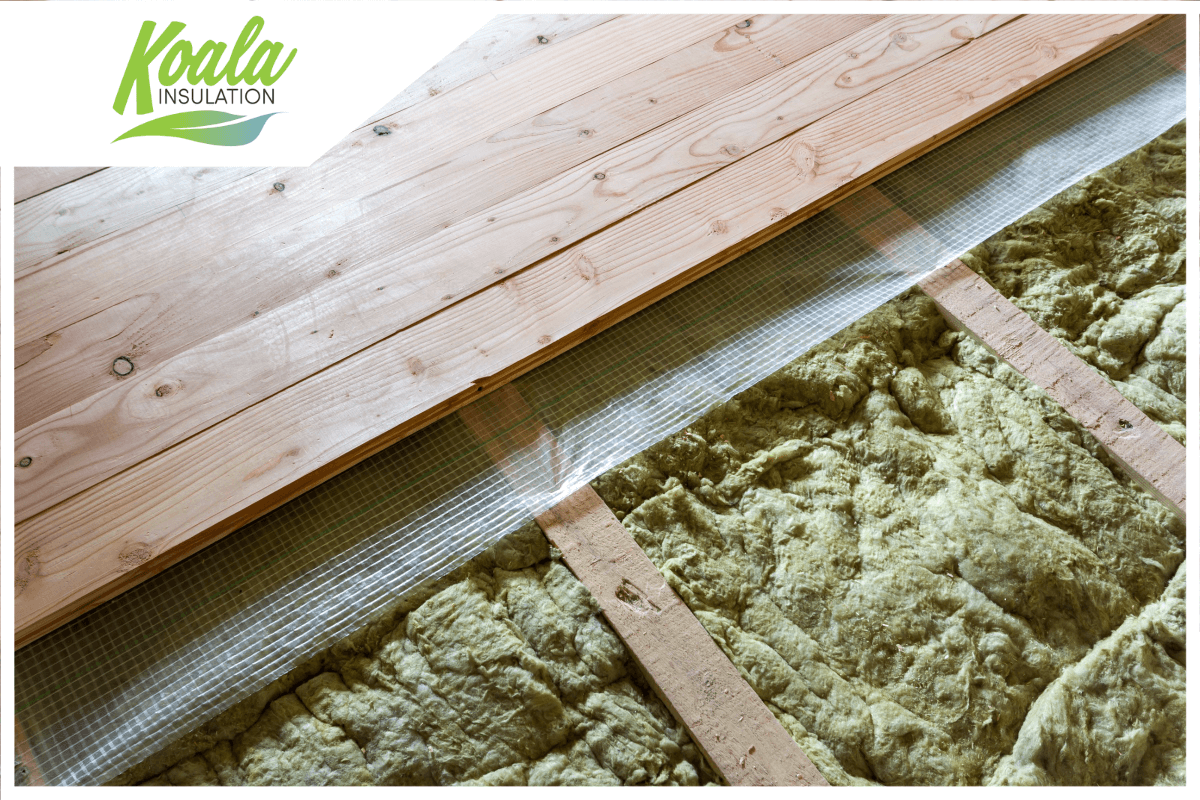What is Underfloor Insulation? Nerves May Not Be Causing Cold Feet!

Installing Underfloor Insulation
When it comes to updating the insulation throughout a house, many homeowners may be concerned about the impact an installation can have on their space – namely, getting under the floorboards. However, many homeowners may be surprised to find out that there are several effective practices to install or remove and replace the material with little to no damage to their environment. For example, if a house has suspended timber floors, an insulation crew simply needs to lift the floorboards in order to reach the material in between the floor joists. In most other homes, they’re able to easily access the underfloor area through a basement or crawl spaces.
The primary issue your insulation team is looking out for when inspecting underfloor insulation is moisture and condensation collection. This problem is commonly overlooked by homeowners attempting DIY insulation projects – they neglect to properly inspect, clean, and prepare the area before installing material, which can leave behind moisture. This traps the dampness, which can lead to an increased risk of mold growth, rot, and bacteria. If you’re unsure about the insulation that’s right under your feet – or if there is any! – your local insulation experts can evaluate your home’s current condition without having to disturb your space.
4 Ways Underfloor Insulation Improves Your Home
- Heat Loss
The insulation material in between your floor joists is used to improve thermal efficiency and climate control by reducing heat loss. About 10% of heat is lost through the floor of your home when you don’t have a sufficient barrier to reduce the movement of heat throughout the building, which is known as heat transfer. This can contribute to stifling temperatures in the summer and uncomfortable drafts and chills throughout the winter. It’s important to remember, however, that while underfloor insulation is designed to help keep your floors from feeling ice cold, this doesn’t necessarily have a warming effect. Instead, the primary function of this material is to retain heat that’s meant to be inside the home.
- Air Sealing
Underinsulated floors can be the culprit of drafts and cold spots throughout a house, especially if your building is on a raised foundation. This is caused by air that enters your home through the gaps between the floor and the ground, encroaching inside when there isn’t proper insulation installed. Your insulation team reduces these air leaks by adding the right material between floor joists and applying air sealing to cracks, holes, and other openings. With fewer ways to enter, your home is protected from outdoor pollutants, allergens, and other debris and pests.
- Vapor Barrier
We briefly covered the significant damage that moisture can bring to your home by increasing the risk of health hazards and ruining the integrity of your building envelope. For homes with wood flooring, moisture and unnoticed or hidden water damage can lead to mold growth, warped wood, and pest infestations. The underfloor insulation throughout crawl spaces and your basement works to create a tight vapor barrier, which reduces condensation and dampness. However, it’s important to remember that the material needs to be supported with effective drainage and crawl space ventilation to help combat water problems.
- Energy Costs
Finally, the material installed under your floors can help to significantly lower the energy usage and costs of your household. You can reduce your heating and cooling bills by 15% on average with updated insulation and air sealing materials. Deteriorated and damaged insulation could be contributing to heat loss in the winter and heat gain in the summer, especially if you’re also missing material in crucial areas like under the floorboards. As such, your HVAC needs to run for longer periods of time to replace the lost temperature in an effort to keep up with the desired number on the thermostat. Not only does this increase your energy usage and utility bills, but it can also increase the risk of needing more maintenance on a strained and overworked unit.
Replacing older insulation and air sealing is just the first step to reducing your monthly costs. By adding necessary material to commonly overlooked areas like in between ceiling and floor joists, throughout the basement, and under crawl spaces, you’re improving the home’s climate control capabilities. Heat is blocked from entering during warmer months and desired warmth is trapped inside during colder weather. When you start to notice a spike in your bills and maintenance fees, it’s time to take a look at your home’s insulation and air sealing with your local industry professionals.
Find Local Resources For More Information
Improving your home’s environment shouldn’t need to be an expensive and time consuming effort. Instead, contacting your local industry professionals can help you to save money both during and after the project while also working around your busy schedule. At Koala Insulation, our teams are dedicated to improving the environments of their communities. By offering free evaluations, your local experts can help you find energy-efficient and cost-effective solutions while only prioritizing necessary changes that can solve irregular temperatures, poor indoor air quality, and high energy usage. Contact your local Koala Insulation crew today to learn more about how updated insulation and air sealing impacts your household and schedule a free evaluation.
Find Your Location


Get a quote


